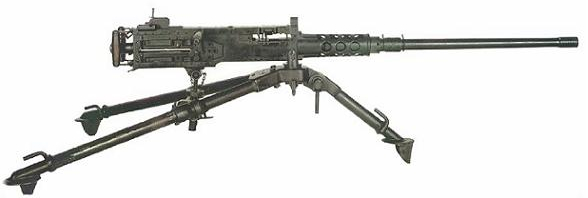Browning M2 HB machine gun
History, technical sheet and photo

Browning M2 HB machine gun history
At the end of the First World War and the development of tanks, the US Armed Forces noticed that water-cooled machine guns, especially the M1917A1, took up too much space in armored vehicles. As the crisis in Europe increased only from 1930 onwards, the American Ordnance Department was tasked with developing an air-cooled machine gun for the infantry.
The Browning 1919A4 machine gun was developed by engineer John Browning in a caliber of 7.62 mm (US caliber: .30) and has the same firepower as the water-cooled M1917A1.
In 1921, the Americans developed a 1919A4 derivative for 12.7 mm air combat, which is also of interest to infantry for its fight against armored vehicles. Equipped firstly with a sleeve for water cooling, it is then equipped with a wider barrel for air cooling, thus simplifying its use and transport, especially for infantry. This new version is called Browning M2 HB (for Heavy Barrel, heavy gun).
The M2 HB equipped American planes, tanks, armored vehicles and support sections of the infantry throughout the Second World War. It adapts to multiple configurations and is still used today, in modernized forms, in most of the world’s armies.
Browning M2 HB machine gun specification
Creator/User: United States of America
Denomination: Browning M2 HB – .50
Fire mode: automatic and semi-automatic
Caliber: .50 BMG (12.7×99mm)
Feed system: belt-fed
Effective firing range: 1,800 m
Maximum firing range: 2,500 m
Rate of fire: 500 rounds/min
M2 HB machine gun weight : 38 kg
M3 tripod weight : 20 kg
105 round-belt weight: 17 kg
Total weight : 72,62 kg
Length: 1653 mm
Barrel length : 1143 mm



